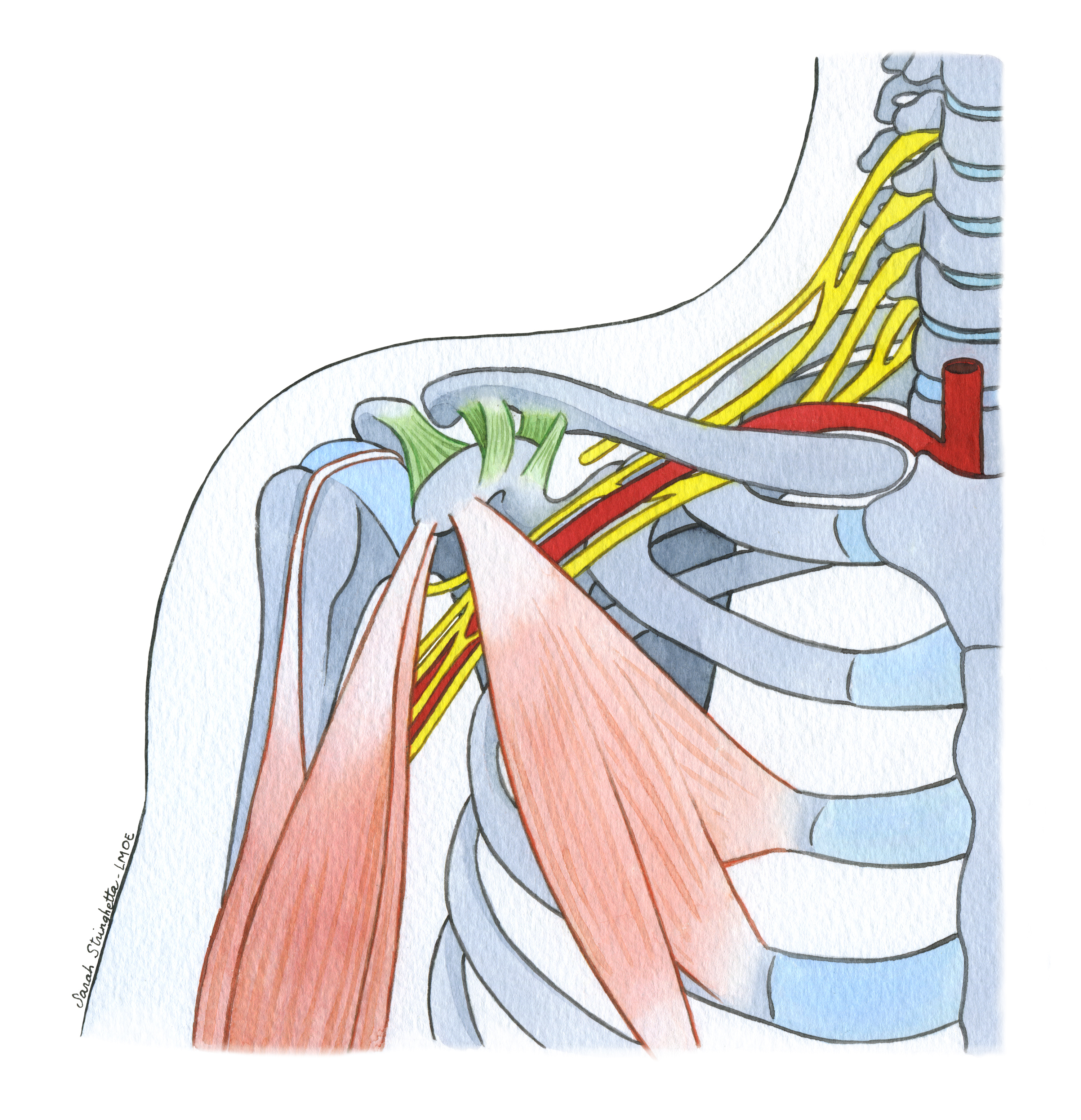If the integration of the encephalon in the osteopathic examination and treatment undoubtedly offers new and promising perspectives, it still seems difficult for many colleagues to imagine being able to « touch » the brain to detect and correct potential « somatic dysfunctions ».
To approach the encephalon, two important points must be considered.
1. The nature of the cerebral osteopathic lesion.
The osteopathic lesion (latin: laesus, from laedere : injure) as we consider it is a true injury[1] that alters the connective tissue[2]. This lesion is established following the pathophysiological process of inflammation (acute phase) and of fibrosis (chronic phase) and is characterized by loss of elasticity in the affected tissue.
The peripheral nervous system does not, strictly speaking, scar in the same way as connective tissue but may repair itself[3]. The fixation of a peripheral nerve that we feel under our fingers is therefore located in the connective tissue[4], not the neural tissue itself.
Unlike peripheral nerves, when the central nervous system is injured it regenerates very little or not at all since local inflammation is accompanied by a proliferation of astrocytes that hypertrophy and cluster to form a solid and compact glial scar. The osteopathic lesion may therefore manifest as inflammation (perception of an area of fullness, warm and radiating) or in the form of gliosis (perception of a vacuum, cold, fixed).
In our experience, it would seem that somatoemotional fixations (psychological stress) tend to show as a zone of fullness whereas cerebral lesions (sequelae of vascular accidents, degenerative neurological pathologies) are usually felt as a vacuum[5].
Let us not forget that the encephalon is, by nature, insensitive. Therefore it is not possible, as with a cranial fixation, to use the palpation of a possibly sensitive or painful area as confirmation of the diagnosis of an osteopathic lesion of the encephalon.
2. The anatomical situation of the encephalon.
It seems difficult to reach the encephalon, locked in its cranial box, enveloped by the reciprocal tension membranes and bathing in cerebrospinal fluid. We also know that the consistency of the brain is flaccid, like a mixture of gelatine and fat, so that even direct palpation of it to assess its elasticity would not yield much information.
To « apprehend »[6] the encephalon, we must in fact switch to a different level of palpation: a subtle, « vibratory » palpation, that gives appreciation of the electromagnetic activity of a zone of the brain rather than its so-called loss of elasticity. The vibratory perception is not achieved through « cranial listening » but rather direct contact with the precise intention of evaluating the zones of disruption of the brain. The challenge is for the touch to remain superficial, with the hand being light, transparent, so as to allow contact with the encephalon. This is not about stacking the tissues but rather, going beyond the cranium using mental projection.
This approach requires knowledge of anatomy and proper visualisation of the encephalon in three dimensions. Each cerebral structure will be tested analytically in the 3 planes around the 3 axes with the same light touch used in the inhibitory balance test.
For the treatment of a cerebral fixation, the recoil is an ideal technique since the vibration generated by the impulse of the hand movement can go through the cranium and reach the encephalon. As for the test, the tension applied in the recoil must paradoxically remain very light to be able to project in depth towards the targeted area.
[1] The term osteopathic lesion (tissue alteration) is much more accurate than the term somatic dysfunction since the focus of palpatory diagnosis is the structural cause of the problem (the lesion) rather than the resulting consequences (dysfunctions).
[2] Connective tissue in the broadest sense, i.e. all the tissues derived from the mesoblast: bones, fasciae, aponeuroses, muscles and tendons, blood vessels, etc.
[3] Form new axons and new synapses, regenerate their myelin sheath or even fabricate new neurons.
[4] The different sheaths that envelop nerve fibres.
[5] Which does not mean, however, that all areas felt as full are always a reflection of emotional disruption.
[6] Literally as well as figuratively (latin : apprehendere « take, hold, catch »).







